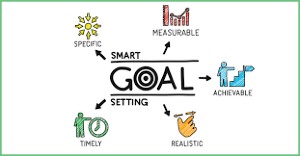 Setting and accomplishing long-term objectives is critical to personal and professional development. Long term objectives give people direction, drive, and a feeling of purpose, guiding them toward their intended future achievements. However, accomplishing these goals can be difficult and takes careful planning, dedication, and endurance. In this guide, we’ll look at the difference between long term and short term goals, the distinction between business and personal goals, and successful tactics for creating and accomplishing long term objectives.
Setting and accomplishing long-term objectives is critical to personal and professional development. Long term objectives give people direction, drive, and a feeling of purpose, guiding them toward their intended future achievements. However, accomplishing these goals can be difficult and takes careful planning, dedication, and endurance. In this guide, we’ll look at the difference between long term and short term goals, the distinction between business and personal goals, and successful tactics for creating and accomplishing long term objectives.
Long Term VS Short Term Goals
Long term goals are objectives that take a large amount of time and effort to complete, usually lasting a year or more. These goals frequently serve as the foundation for one’s future vision, and they might include several steps or milestones along the way. Long term ambitions include starting a business, getting a degree, or buying a house.
Short term goals, on the other hand, are smaller, more urgent objectives that can be completed in a matter of days, weeks, or months. While short term goals might help achieve long term goals, they are usually focused on tasks and activities that must be performed in the near future. Short term goals can include finishing a project, saving for a vacation, or learning a new skill.
Understanding the difference between long term and short term goals is critical for effective goal planning because it allows people to prioritize their efforts and allocate resources appropriately.
Business VS Personal Goals
Long term goals can be divided into two categories – business goals and personal goals. Business goals are objectives that pertain to professional or entrepreneurial operations, such as growing revenue, gaining market share, or introducing new products. These goals are frequently strategic in nature and are consistent with the organization’s mission and vision.
Individuals make personal objectives for themselves in order to enhance their life, relationships, or well being. These objectives could include attaining work life balance, increasing health and fitness, or pursuing a passion or interest. Personal objectives are very individualized, reflecting the individual’s values, interests, and priorities.
While commercial and personal goals may differ in focus and scope, the process of establishing and accomplishing them frequently employs similar principles and tactics. Both require a clear sense of purpose, meticulous planning, and constant work to overcome difficulties and succeed.
6 Ways to Set and Achieve Long Term Goals
1. Define Your Vision
Begin with establishing your long term vision and identifying your goals. Visualize your ideal future and contemplate the exact goals you want to attain. Create a detailed list of your goals, including deadlines, milestones, and quantitative success indicators.
2. Break it Down
Subdivide your long term goals into smaller, more doable activities and milestones. This will make the process less intimidating and allow you to keep track of your progress better. Make a schedule or action plan that outlines the measures you need to take to achieve each milestone.
3. Set SMART Goals
Make sure your objectives are specific, measurable, attainable, relevant, and time bound (SMART). Setting clear and detailed targets will allow you to better focus your efforts and track your success along the way. Avoid unclear or ambiguous goals that are difficult to measure or track.
4. Maintain Flexibility
Be prepared to revise your goals when circumstances change. Life is unpredictable, and unexpected problems or opportunities can come along the way. Stay open to new opportunities and be willing to change your plans if necessary to stay on track for your long term goals.
5. Stay Motivated
Keep your motivation and enthusiasm up by reminding yourself of your long term vision and the reasons you established your goals in the first place. Celebrate your accomplishments, no matter how minor, and view setbacks or hurdle as chances for development and learning. Surround yourself with supportive friends, family, and mentors who can motivate and inspire you to stay focused on your goals.
6. Take Action
Finally, take continuous and purposeful action to achieve your long term goals. Break down your duties into daily or weekly actions, and make it a habit to work towards your goals on a continuous basis. Maintain discipline and focus on your priorities, and don’t be hesitant to seek assistance or advice when necessary.
Long term goal setting and achievement involve dedication, tenacity, and strategic preparation. By defining your vision, breaking down your goals, setting SMART objectives, remaining adaptable, motivated, and taking persistent action, you can make your dreams a reality and create the future you want. Remember that success is a journey, not a destination, and embrace the process of personal growth and discovery along the way.
Leave a Reply